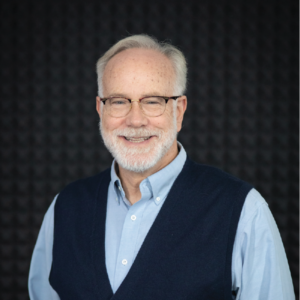The Third Third Language Challenge: Are You Part of a Natural Disaster?
Why refer to the aging population as a silver or gray tsunami? Of course, the color has to do with what happens to the hair of most older adults. A tsunami is a giant wave made up of millions upon millions of water molecules. This wave, when hitting land, wreaks destruction. It destroys buildings and villages. It kills people who are helplessly in its path.
The Third Third Language Challenge: Are You Part of a Natural Disaster?
by Mark D. Roberts, Ph.D.
Max De Pree Center for Leadership
Fuller Theological Seminary
In a recent blog post, I reflected on the journalistic use of “aging monster” to describe the population growth of senior adults combined with the shrinking number of younger people. I shared my unhappiness with referring to human beings as unwitting parts of a monster.
Unfortunately, this kind of language usage is not uncommon when it comes to people who are in the third third of life. The “aging monster” metaphor reminds me of other more common metaphors used to talk about the growing number of senior adults. A recent MarketWatch article had this headline: “These housing markets will feel the biggest impact from the ‘Silver Tsunami’.” The “Silver Tsunami,” sometimes called the “Gray Tsunami” or “Silver Wave,” is another way of talking about the “monster” made up of older human beings.
Why refer to the aging population as a silver or gray tsunami? Of course, the color has to do with what happens to the hair of most older adults. A tsunami is a giant wave made up of millions upon millions of water molecules. This wave, when hitting land, wreaks destruction. It destroys buildings and villages. It kills people who are helplessly in its path. The coming Silver Tsunami is made up of millions upon millions of senior adults. This part is true. But must this human wave be destructive? Are we stuck with this eventuality?
I can understand the point and power of the Silver Tsunami metaphor. I must confess, however, that I’m not comfortable with referring to people in this way. Perhaps that’s because I’m in the third third of life and what’s left of my hair is mainly silver. I don’t want to think of myself as a helpless part of a killer wave.
But, in addition to the depersonalization involved in the tsunami metaphor, I’m struck by the fact that if a tsunami is coming your way, you’re going to get absolutely no help from the tsunami itself. It’s coming and there’s nothing the tsunami can do about it. The giant wave can’t make a course correction. When it comes to the so-called Silver Tsunami, however, we have friendlier options. The people who make up this wave could actually change its course or lessen its destruction through their own efforts. If, for example, several million third thirders in the United States were to start businesses, then they would not become the burden envisioned by the tsunami doomsayers. They would be contributing to the economy in positive ways, through job creation, tax paying, and so on.
If this vision of entrepreneurial third thirders seems unrealistic, consider this. According to the Kaufmann Foundation, the nation’s leading observer and promoter of entrepreneurship, a higher percentage of people in the 55-64 age range become entrepreneurs than people in the 20-34 age range, and this has been true for over 20 years. Moreover, the fastest growing entrepreneurial segment of our society is, you guessed it, the 55-64 segment. Hmmm. Maybe we should envision the Silver Tsunami as a wave of new businesses, bringing new vitality and jobs to our economy.
Looking for More on the Third Third of Life?
You can find much more about the third third of life by checking out our Third Third Resources page.

Mark D. Roberts
Senior Strategist
Dr. Mark D. Roberts is a Senior Strategist for Fuller’s Max De Pree Center for Leadership, where he focuses on the spiritual development and thriving of leaders. He is the principal writer of the daily devotional, Life for Leaders,...


